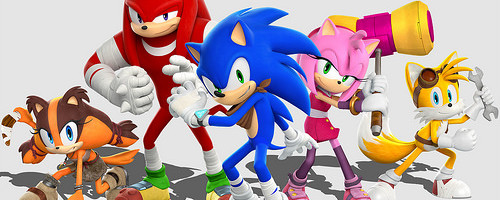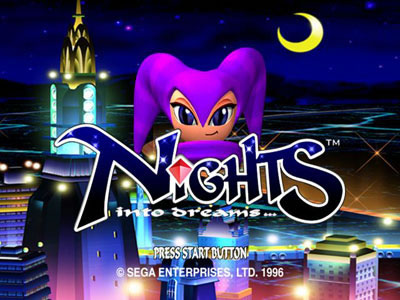A golden birthday only happens once and we at Sonic Stadium wanted to make sure there was some fanfare! That’s why we teamed up with SEGAbits and Sonic Retro for an entire week of articles, features and videos, with the intent of looking back at Sonic’s past, analyzing the present and looking forward to the future. For those of you who may have missed some of it, we thought we’d post a run-down of all the content the awesome staff of our three sites created.
Enjoy!
SEGAbits & Sonic Retro:
SEGA Channel Retro, Sonic Birthday Livestream: Sonic Retro kicked off their week with an hour long livestream of Sonic Jam, Sonic 2 on the Retro Engine and the entirety of Sonic’s story in Sonic Adventure.
Shadow the Hedgehog Review: SEGAbits kicked off their week with a review from Ben Burnham that took a look back at one of the most infamous games in the franchise’s history. One interesting spin this review took was offering a look at how the game was perceived when it was first released back in 2005, before Sonic 2006 one upped it a year later and became the most infamous game in Sonic’s history.
Visual Memories, Digging through Sonic Adventure & Sonic Adventure 2’s DLC: SEGABits’s TrackerTD takes a look at one of the more obscure features of SEGA’s old Sonic games, the free downloadable content. Take a look at what DLC was like back in the days of the Dreamcast when files had to fit within 100KB of storage.
SEGAbits Plays Episode #2, featuring Sonic, Tails and Donald Duck SEGA Pico games: Barry The Nomad livestreams a couple of SEGA Pico Sonic games. If you’ve never seen these obscure entries into the Sonic franchise, there’s no better time to take a look.
Presented Without Commentary, My 1997 Sonic Fan Comic “Sonic The Hedgehog vs. The Bots”: That same day, Barry also posted an old fan comic he drew on Sonic Retro. As someone who’s worked in fan comics, I can say that this is without doubt the most well drawn and artistically crafted fan comic ever made. I bow to your prowess, lil Barry!
The Weekly Five, Sonic Video Game Moments that Make Us Smile: George takes a look at five smile inducing Sonic moments in SEGAbits’s Weekly Five feature.
A Retrospective of Sonic’s Classic Trilogy: A Sonic Stadium guest article written for SEGAbits by Brad. This incredibly well crafted piece takes a look at the original Sonic trilogy. I would highly suggest you take a look.
23 Sonic facts to know on Sonic’s 23rd Birthday: SEGAbits ended its celebration by going over 23 facts every Sonic fan ought to know on Sonic’s birthday.
Editorial: False Positive: Sonic, the Media, and Wrongly Diagnosing the Problem: Though this technically fell outside of the week long celebration, it was meant for it. SEGAbits contributor GX takes a look at some of the most common criticisms of the Sonic franchise and whether or not those criticisms are viable.
Sonic Stadium
TSS/SEGAbits Review, Sonic Pocket Adventure: We at Sonic Stadium kicked off the celebration with a look back at a great, obscure little Sonic game for the Neo Geo Pocket, in a review originally meant for Sonic Stadium, before it was instead posted on SEGAbit, which eventually made its way back to Sonic Stadium several years later!
TSS Discuss, Sonic Boom…after E3: The Sonic Stadium staff give their thoughts on the Sonic Boom multimedia franchise after SEGA finally showed the game off to the wider gaming press and released a trailer that gave us a greater idea of what to expect.
SEGA Games for the Sonic Gamer, Part 1: SEGA makes more than just Sonic, and this little guide suggests some SEGA games that might tickle your fancy in the same way Sonic does.
The Anatomy of a Bad Sonic Game: SEGAbits guest writer Ben Burnham gives his thoughts on what he thinks makes for a bad Sonic game, and how these issues could be avoided in future games.
In Defense of Sonic Boom Rise of Lyric: I take a stab at defending this divisive game.
TSS Review, Sonic Bricks by Paladone: JonoD takes a look at these recently released LEGO-styled collectibles.
Sonic List, My Favorite Sonic Related Moments: Jason Berry relates some of his most memorable moments with the Sonic franchise. Neat pictures reside within!
Sonic on the Go, Sonic Game for the Game.com: The third part in my Sonic on the Go series (take a look at past entries here), which takes a look back at Sonic’s portable adventures To cap off the celebration on Sonic Stadium, I played and wrote about what is objectively the worse Sonic game ever made. The things I do for you people…
Be sure to look up #Sonic23on23 on twitter to check out some cool Sonic birthday tweets!
There was also some big news this week. First, Sonic 2 HD is back on, with a new engine and staff. On a much more bittersweet note, Aaron Webber announced he was leaving SEGA. We’ll miss you, Aaron!
With this post, #Sonic23on23 is officially over! I hope you enjoyed the content we created for you this week, and I hope you will keep tabs on the other two awesome sites that participated in this as we plow through another year of Sonic.




















